Information about the rendering industry and rendered products to view online and print.
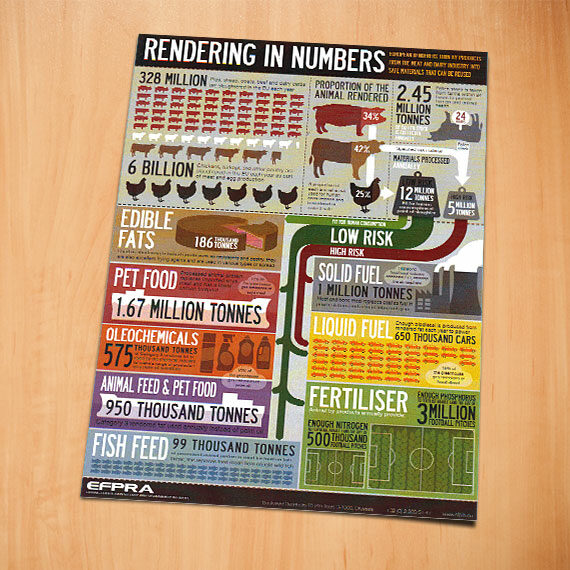
Rendering in Numbers
The rendering industry handles 18 million tonnes of waste in Europe each year. This is reprocessed into fuel, feed, fertiliser and a range of other uses. This infographic has all the key numbers about the European rendering industry.
Rendering in Numbers Infographic (PDF)
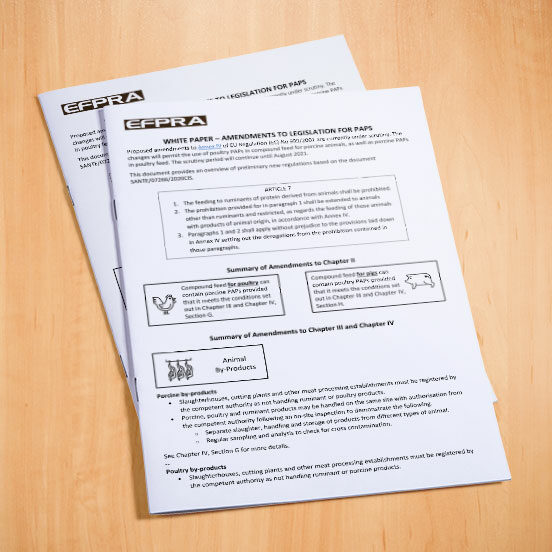
White Paper - GFLI
Life Cycle Assessment of Rendered Products (GFLI), summarises research by Blonk Consultants into the carbon footprint of rendered feed ingredients compared to other common ingredients such as palm oil and soybean meal.
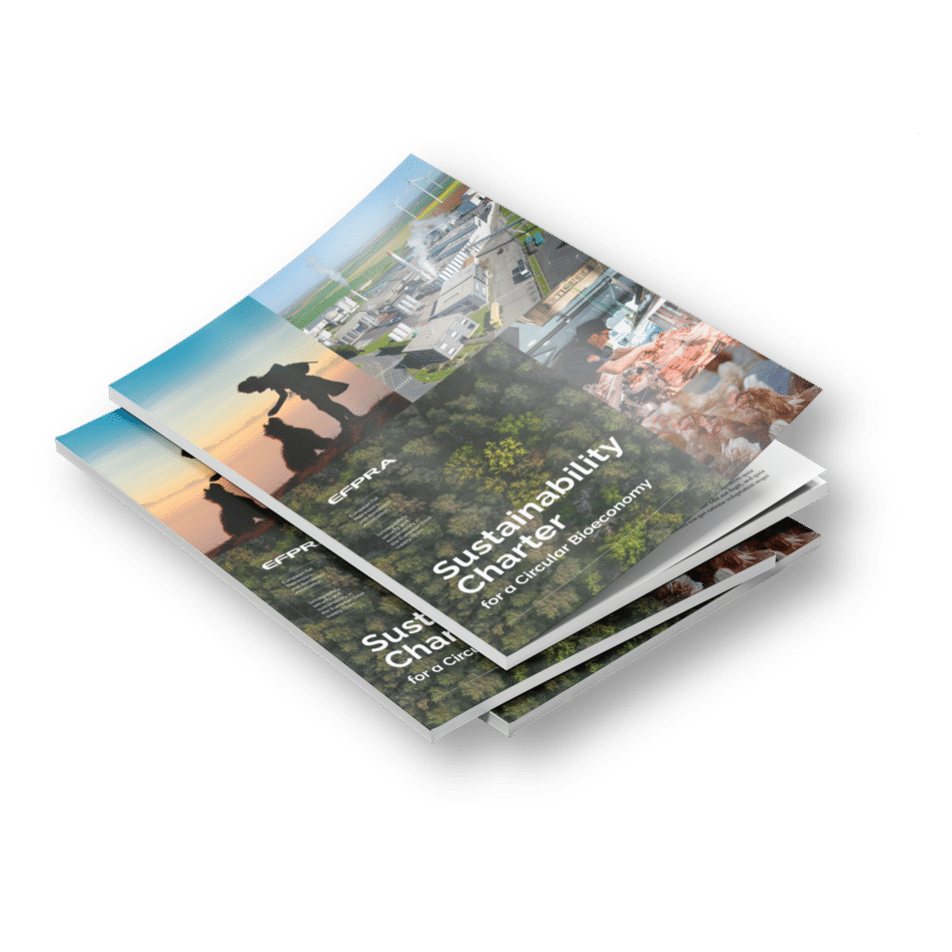
Sustainability Charter
The rendering industry has long been an example of sustainability in action. Renderers recover and recycle valuable materials from by-products and ensure that nothing goes to waste. Now, with ever greater focus on reducing the environmental impact of food production, EFPRA has set out how renderers will continue to contribute to a more sustainable economy. Available in English, French German and Spanish.
Sustainability Charter (English)
Sustainability Charter (French)
Sustainability Charter (German)
Sustainability Charter (Spanish)

White Paper - Legislation
Learn about the main changes to European animal by-products legislation following the reapproval of PAPs in 2021.

White Paper - PAPs in pig diets
Read about research into the benefits of including PAPs in pig diets.
White Paper - PAPs in pig diets

White Paper - PAPs in poultry diets
Read about research into the benefits of including PAPs in broiler and layer diets.
White Paper - PAPs in poultry diets
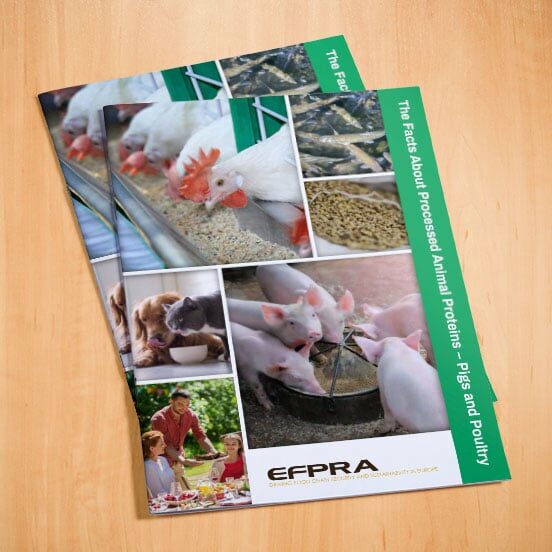
The Facts About Processed Animal Proteins
Category 3 animal by-products are reprocessed into Processed Animal Proteins (PAPs). These are a sustainable, healthy and safe feed ingredient that makes a valuable contribution to closing Europe's so called 'protein gap' and building a circular economy.
The Facts About Processed Animal Proteins (PDF)
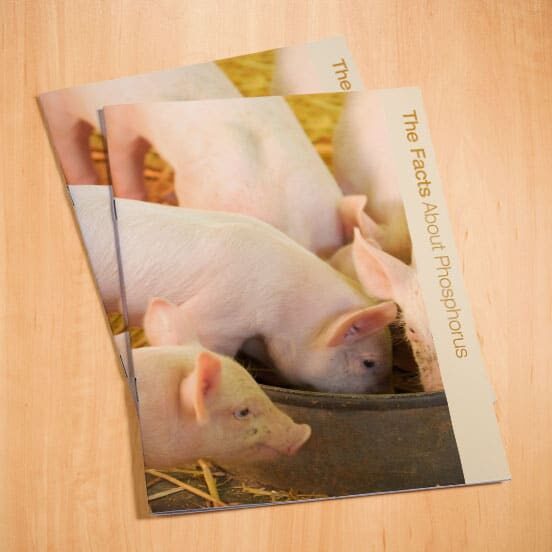
The Facts About Phosphorus
Phosphorus is an important nutrient for both plant and animal growth: it is used as a high value feed ingredient for pets, poultry, pigs and aquafeed, or as a fertiliser. Phosphorus is made by crushing bones, degreasing, then demineralising with diluted hydrochloric acid before the calcium-phosphate is precipitated. This publication describes how Phosphorus can be produced and used.
The Facts About Phosphorus (PDF)
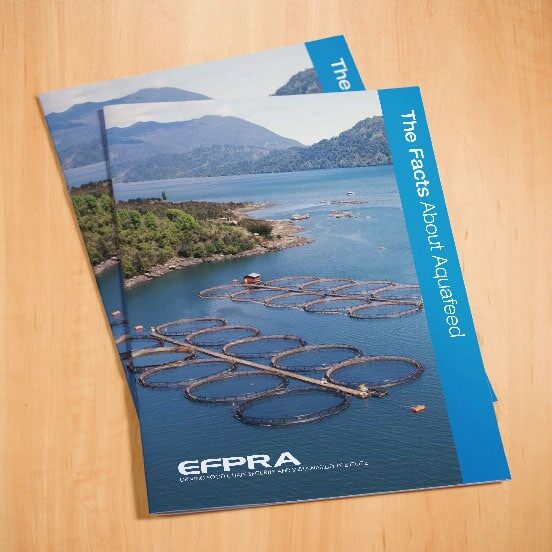
The Facts About Aquafeed
Processed Animal Protein delivers a nutritious cost-effective feed for aquaculture whch is an increasingly important method of food production that involves the farming of fish, molluscs and crustaceans. Nearly 2.5 million tonnes of farmed fish were produced in Europe in 2014 out of a global total of 101 million tonnes.
The Facts About Aquafeed (PDF)

The Facts About Rendering
All industries create by-products that need to be reused, reprocessed or disposed of. Animal production and slaughter is no different, and the natureof the by-product presents particular challenges. This publication describes how rendering supports a safe, reliable and sustainable supply chain for animal products.
The Facts About Rendering (PDF)

The Facts About Edible Animal Fats
Edible fats are an important output of the rendering industry. Fats such as lard, suet and dripping are widely used in European cuisine and are a source of energy, vitamins and fatty acids. Taken from the same carcasses as prime cuts of meat, edible animal fats enhance the taste and texture of food.
The Facts About Edible Animal Fats (PDF)

The Facts About Biofuels and Bioliquids
Biodiesel is Europe's most widely used biofuel. It can be produced from a range of raw materials including rapeseed, palm oil and rendered animal fat. Using rendered fat is a sustainable option compared to other options for transport fuel.
The Facts About Biofuels and Bioliquids (PDF)